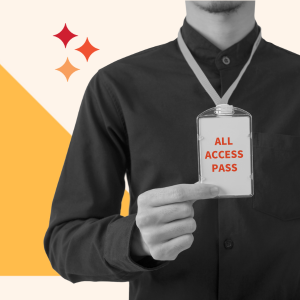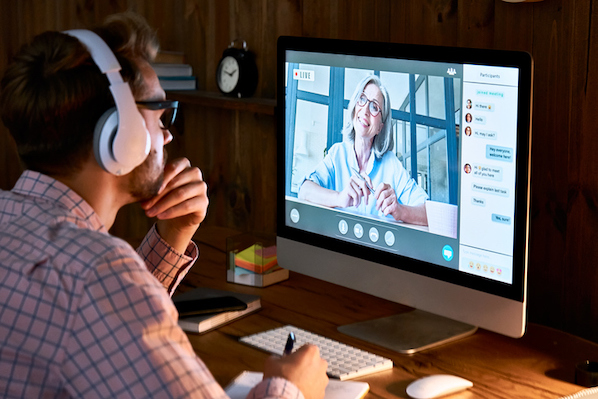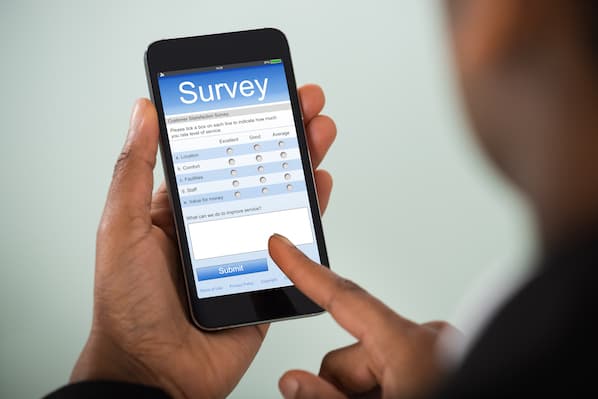 It’s a worst case scenario: You have dozens, hundreds, maybe even thousands of people at your event. The applause is deafening as your keynote speaker strides across the stage. The shouting and clapping gradually subsides and the speaker excitedly thanks and greets the crowd.
It’s a worst case scenario: You have dozens, hundreds, maybe even thousands of people at your event. The applause is deafening as your keynote speaker strides across the stage. The shouting and clapping gradually subsides and the speaker excitedly thanks and greets the crowd.
Only no one can hear her.
After diagnosing the situation, you discover that the microphone has a dead battery. And guess what? You don’t have a backup.
Don’t let this happen to you. To help make sure you don’t let a tiny detail slip through the cracks when you plan your next (or first) event, I’ve compiled this list of event planning tips from some of my esteemed HubSpot colleagues. (These are the people who plan and run the INBOUND conference every year.)
If you want a more in-depth look at how to successfully host an event, open up Event in a Box. It's a free collection of guides, templates, and checklists that we created with Eventbrite.

24 Things Everyone Overlooks When Planning an Event

1) Having a Plan B
"It's scientifically proven (sort of) that something will not go as you planned. Whether your keynote speaker is an hour late or you run out of free coffee, you should be prepared to handle any mishap big or small."
2) Factoring in Additional Charges
"When scouting sites, be sure to look for additional costs that vary by state and venue, like "Bartender Fees" or additional food and beverage taxes. These can end up adding anywhere from 10-30% additional cost that you didn't budget for."
3) Having Extra Meals
"People will say they're vegetarian or gluten-free even if they're not. Have extra meals on hand if you're providing special options, assuming people will sneak some when they weren't supposed to."
4) Knowing Where the Outlets Are
"Figure out where the outlets are. People will be asking where they can charge their phones all the time -- knowing where to send them will make everyone happier."

5) Having Enough Staff
"Over-staff the event under the assumption people will either: not show up, show up late, or have to run around to help attendees out, leaving them not at their post."
6) Creating an Attendee Satisfaction Survey
Create some sort of satisfaction survey (e.g. NPS) before the event and figure out the right place / time for attendees to fill it out (ex. during lunch or a break).

7) Having Resources on Demand
"Have all presentations and slide decks readily available on a resources page before the event concludes. That way, you can do a speedy followup to attendees after the event."
8) Printing Your Name Badges in Alphabetical Order
"Request that your badges be in alphabetical order when you print them (printers won't do that automatically!)."
9) Providing Blank Name Badges
"Always have blank name badges available. Some people will lose their name badges, and others will show up unexpected."
10) Providing Transportation & Accommodation Info
"Provide information about transportation, nearby restaurants, and directions for people coming from out of town."

11) Getting a Fresh Pair of Eyes to Review Your Plan
"Talk to someone else who isn't planning the event to figure out what information you are missing. The event planner is always too close to the event logistics and may think something is understood when it isn't."
12) Putting Your Event Hashtag on All of Your Collateral
"If you create an event hashtag to consolidate the Twitter conversation about your event (which you should), make sure the hashtag is on all the collateral: posters, signage, and even speaker presentations. Keeping the hashtag prominent will remind attendees to participate in the discussion, and make it easier for you to gather feedback from the collective conversation since most of it will all be in one place."
13) Printing Out Copies of Your Agenda
"Print out some copies of your event agenda even if you plan on going paperless. Someone always asks."
14) Providing Mac Adapters
"Provide Mac adapters for presentation rooms. Otherwise, some presenters may be unable to show their presentations up on the display or projection screen. "

15) Setting Up an Email Address for Monitoring Questions
"Provide an email address people can send questions/comments/requests to during the conference. Make sure someone is manning the inbox at all times to avoid late responses and unhappy guests."

16) Having Signage for Directing Attendees
"It doesn't matter how large or spaced out your event is, have signage. The last thing you want to see on your NPS score is that people got lost or missed something because they didn't know where a room was."
17) Creating a Contact List With Everyone's Cell Phone Numbers
"Get all the cell phone numbers of everyone involved -- staff, speakers, etc. -- and have it with you at all times."
18) Having Someone at Your Registration Area Throughout the Event
"Always have someone at registration. Even if you have a convenient information station, attendees will go back to registration for their main questions."
19) Setting Up a Coat Room for Attendees
"Have a place for coats, suitcases, umbrellas, etc. for the last day of the conference when out-of-towners will have already checked out of their hotel rooms."
20) Providing a "Confidence Monitor" for Speakers
"Confidence monitors -- small monitors in front of the speaker that face them instead of the audience -- make all the difference. Your speaker will know where they are and not have to constantly look behind them as they speak. Bonus: Add a clock or timer to the monitor so the speaker stays on time."

21) Having Miscellaneous Supplies on Hand
"Bring paper, pens, markers, tape, scissors. You never know if you'll need to post an impromptu sign directing people or leave a note for staff."
22) Reviewing Your Banquet Event Orders (BEOs)
"Make sure you review all your BEOs with your event planner prior to the event. You can potentially save a lot of money by ensuring your orders are set for the exact amount of people that will be attending the event."
23) Scheduling Recaps With Your Team
"For multi-day events, make sure you schedule nightly recaps with your core team to review any issues from that day and highlight key events happening the next day. Also, plan for a nightly walkthrough to make sure that your rooms' sets have been accurately changed for the next day."

24) Communicating Changes to Attendees
"Have a plan for when you want to make changes to scheduling or sessions. Making changes is okay but make sure you have an effective way to communicate the plan to all attendees. It can be via social media or simply by having someone make an announcement with 'housekeeping notes' at the start of each breakout session to keep attendees up to date."
What are some other event planning details that are easy to overlook? Share them in the comments section below!
Event Marketing



![11 best event registration software tools [+ what makes them great]](https://53.fs1.hubspotusercontent-na1.net/hubfs/53/65_8%20Best%20Event%20Registration%20Tools.png)







![What Is a Breakout Session? [+ How To Plan Your Own]](https://53.fs1.hubspotusercontent-na1.net/hubfs/53/breakout-session_2.webp)
